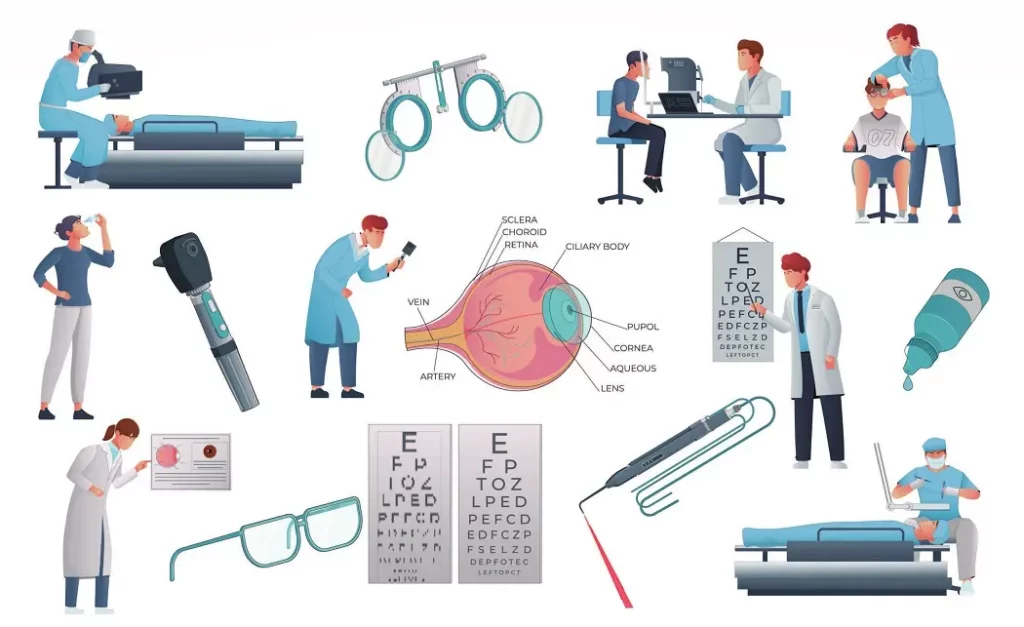All Categories
Featured
Laser eye surgical procedure has evolved substantially over the previous couple of decades, providing more secure and more efficient solutions for vision modification. Constant innovations in technology and strategies are making these treatments significantly interesting people looking for flexibility from glasses or get in touch with lenses. Let's examine several of the most exciting developments that are redefining the field of laser eye surgery.
SmartPulse is a sophisticated advancement incorporated right into sophisticated surface area ablation treatments such as PRK (Photorefractive Keratectomy) This technology ensures smoother corneal surfaces post-surgery, resulting in much faster visual healing and boosted comfort during the recovery process. Clients going through SmartPulse-assisted PRK usually report improved visual quality quicker than with typical techniques.
Wavefront-guided modern technology allows cosmetic surgeons to develop a highly in-depth map of the eye's optical system, recognizing also the tiniest flaws. These wavefront dimensions make it possible for exact corrections, improving not just vision intensity however likewise comparison sensitivity and night vision. This modern technology is specifically beneficial for people with higher-order aberrations that typical techniques may ignore.
Traditional LASIK procedures include developing a corneal flap with a mechanical blade. Nonetheless, innovations have actually presented all-laser LASIK, which uses femtosecond lasers to develop the flap with remarkable precision and predictability. This bladeless method reduces problems and enhances the overall security and reliability of the treatment.
Tiny Incision Lenticule Extraction (SMILE) has become a minimally intrusive option to LASIK. By utilizing a femtosecond laser to eliminate a tiny item of corneal tissue (lenticule) through a tiny cut, SMILE preserves corneal integrity and minimizes the danger of dry eye disorder. This technique is specifically suitable for individuals with high myopia.
![]()
Astigmatism improvement has seen substantial improvements with customized laser therapies. Advanced mapping technologies allow precise reshaping of irregular corneas, resulting in sharper and a lot more regular vision. These customized treatments are helping individuals accomplish far better end results than ever before.
The most recent generations of excimer lasers operate at greater rates and with better accuracy, permitting much shorter treatment times and faster healing. These lasers also feature real-time radar that readjust for any type of eye movements during the procedure, making sure the laser stays completely aligned.
![]()
Man-made intelligence (AI) is playing a pivotal role in laser eye surgery by analyzing complex information sets to refine surgical preparation and execution. AI-powered tools assist surgeons in achieving optimum end results, tailoring each procedure to the individual's unique vision profile.
Laser innovation isn't limited to refractive surgical procedure. It is now being utilized for therapeutic functions, such as treating corneal marks, taking care of keratoconus, and executing corneal cross-linking. These improvements are expanding the scope of laser applications, enhancing high quality of life for clients with a variety of eye conditions.
Verdict
The field of laser eye surgery remains to advancement, using a broader variety of options and better end results for people. From boosted precision with AI to minimally invasive methods like SMILE, these developments are changing how we fix vision and treat eye conditions. If you're considering laser eye surgical treatment, speaking with a professional will help you check out the most up to date modern technologies and determine the most effective option for your vision requires.
- SmartPulse Modern Technology
SmartPulse is a sophisticated advancement incorporated right into sophisticated surface area ablation treatments such as PRK (Photorefractive Keratectomy) This technology ensures smoother corneal surfaces post-surgery, resulting in much faster visual healing and boosted comfort during the recovery process. Clients going through SmartPulse-assisted PRK usually report improved visual quality quicker than with typical techniques.
- High-def Vision with Wavefront Evaluation
Wavefront-guided modern technology allows cosmetic surgeons to develop a highly in-depth map of the eye's optical system, recognizing also the tiniest flaws. These wavefront dimensions make it possible for exact corrections, improving not just vision intensity however likewise comparison sensitivity and night vision. This modern technology is specifically beneficial for people with higher-order aberrations that typical techniques may ignore.
- All-Laser LASIK for Boosted Safety
Traditional LASIK procedures include developing a corneal flap with a mechanical blade. Nonetheless, innovations have actually presented all-laser LASIK, which uses femtosecond lasers to develop the flap with remarkable precision and predictability. This bladeless method reduces problems and enhances the overall security and reliability of the treatment.
- SMILE for Marginal Invasiveness
Tiny Incision Lenticule Extraction (SMILE) has become a minimally intrusive option to LASIK. By utilizing a femtosecond laser to eliminate a tiny item of corneal tissue (lenticule) through a tiny cut, SMILE preserves corneal integrity and minimizes the danger of dry eye disorder. This technique is specifically suitable for individuals with high myopia.

- Personalized Therapies for Astigmatism
Astigmatism improvement has seen substantial improvements with customized laser therapies. Advanced mapping technologies allow precise reshaping of irregular corneas, resulting in sharper and a lot more regular vision. These customized treatments are helping individuals accomplish far better end results than ever before.
- Faster Recovery with Improved Lasers
The most recent generations of excimer lasers operate at greater rates and with better accuracy, permitting much shorter treatment times and faster healing. These lasers also feature real-time radar that readjust for any type of eye movements during the procedure, making sure the laser stays completely aligned.
- AI-Driven Precision

Man-made intelligence (AI) is playing a pivotal role in laser eye surgery by analyzing complex information sets to refine surgical preparation and execution. AI-powered tools assist surgeons in achieving optimum end results, tailoring each procedure to the individual's unique vision profile.
- Past Vision Correction: Restorative Applications
Laser innovation isn't limited to refractive surgical procedure. It is now being utilized for therapeutic functions, such as treating corneal marks, taking care of keratoconus, and executing corneal cross-linking. These improvements are expanding the scope of laser applications, enhancing high quality of life for clients with a variety of eye conditions.
Verdict
The field of laser eye surgery remains to advancement, using a broader variety of options and better end results for people. From boosted precision with AI to minimally invasive methods like SMILE, these developments are changing how we fix vision and treat eye conditions. If you're considering laser eye surgical treatment, speaking with a professional will help you check out the most up to date modern technologies and determine the most effective option for your vision requires.
Latest Posts
Why Consistent Car Maintenance at Montclare Auto Repair Saves You Money
Published Jun 01, 25
1 min read
Smooth Light Weight Aluminum Gutters: The Smart Option for Your Home
Published May 27, 25
1 min read
Explore Top Car Repair Solutions at Montclare Auto Repair – Drive with Confidence
Published May 27, 25
1 min read
More
Latest Posts
Why Consistent Car Maintenance at Montclare Auto Repair Saves You Money
Published Jun 01, 25
1 min read
Smooth Light Weight Aluminum Gutters: The Smart Option for Your Home
Published May 27, 25
1 min read
Explore Top Car Repair Solutions at Montclare Auto Repair – Drive with Confidence
Published May 27, 25
1 min read